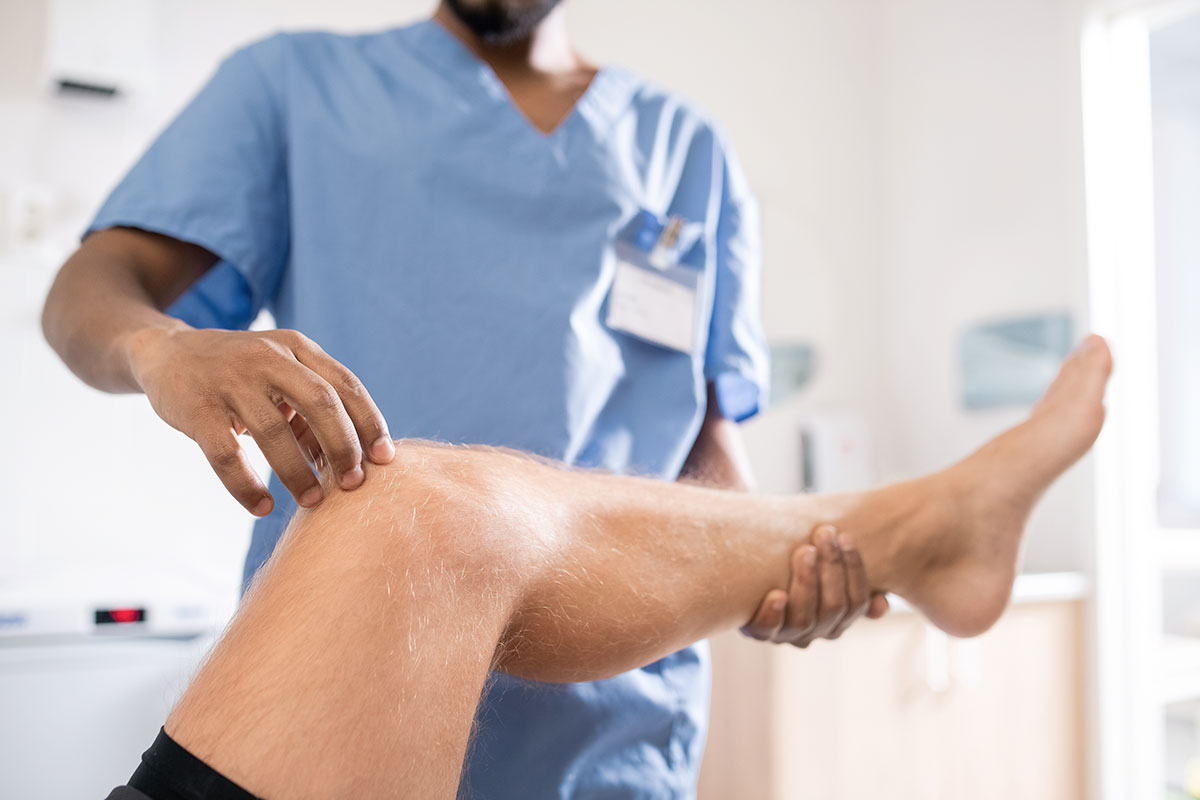
Knee Pain
Understanding, Assessment, and Myotherapy Treatment
Knee pain is a prevalent issue that affects individuals across various age groups and activity levels. The complexity of the knee joint and its frequent use in daily movements make it susceptible to a range of injuries and conditions.
An accurate diagnosis is crucial for effective treatment, as the source of knee pain can significantly influence the therapeutic approach.


Common Causes of Knee Pain and Discomfort
Soft Tissue Injuries: Ligament sprains and muscle strains are common in both athletic and everyday activities, resulting from overstretching or tearing these supportive structures.
Meniscus Damage: The meniscus, a cartilage in the knee, can be torn during activities that involve forceful twisting or rotation of the knee joint.
Arthritis: Various forms of arthritis, such as osteoarthritis, rheumatoid arthritis, and post-traumatic arthritis, can lead to knee pain due to joint inflammation and degeneration.
Biomechanical Dysfunction: Abnormalities in gait or alignment can lead to uneven distribution of weight and stress on the knee joint, causing pain.
Muscle Weakness: Weakness in the muscles supporting the knee, particularly the quadriceps and hamstrings, can lead to instability and increased risk of injury.
Overuse: Repetitive activities and overuse can lead to conditions such as patellar tendinitis, also known as jumper’s knee.
ITB Friction Syndrome: Irritation of the iliotibial band, a thick band of tissue that runs from the hip to the outer part of the knee, can cause pain on the outer knee.
Who Is Often Affected by Knee Pain?
Knee pain can affect anyone, from athletes engaged in high-impact sports to individuals leading a sedentary lifestyle. However, certain groups are more susceptible:
Athletes: Especially those involved in sports that require jumping, pivoting, and quick directional changes.
Aging Individuals: As the risk of osteoarthritis and joint degeneration increases with age.
People with Overweight or Obesity: Excess weight puts additional stress on the knee joints.
Individuals with a History of Injury: Previous knee injuries can lead to chronic pain and susceptibility to further damage.


How Myotherapy Can Help with Knee Pain
Myotherapy provides a comprehensive approach to managing knee pain, focusing on both symptom relief and addressing the underlying causes:
Soft and Deep Tissue Massage: These techniques can alleviate muscle tension around the knee, improving mobility and reducing discomfort.
Myofascial Cupping: Cupping therapy can enhance circulation and promote healing in the affected areas.
Myofascial Dry Needling: Targeting trigger points to relieve pain and muscle tightness that may contribute to knee pain.
Stretching: Customized stretching exercises can improve flexibility and reduce stress on the knee joint.
TENS (Transcutaneous Electrical Nerve Stimulation): A non-invasive method to provide pain relief by stimulating the nerves around the knee.
Hot and Cold Therapies: Applying heat can relax muscles, while cold therapy can reduce inflammation and swelling.
Postural and Corrective Exercises: Strengthening and stabilizing the muscles supporting the knee can prevent future injuries and alleviate biomechanical dysfunction.
Our Myotherapists at Elite Myotherapy are skilled in assessing knee pain, identifying its source, and crafting individualized treatment plans. By addressing both the primary issue and compensatory patterns that may arise due to the injury, we aim to restore normal function and mobility, helping you return to your daily activities pain-free.






